Statin Intolerance Clinics: How Structured Protocols Help Patients Tolerate Cholesterol Medication
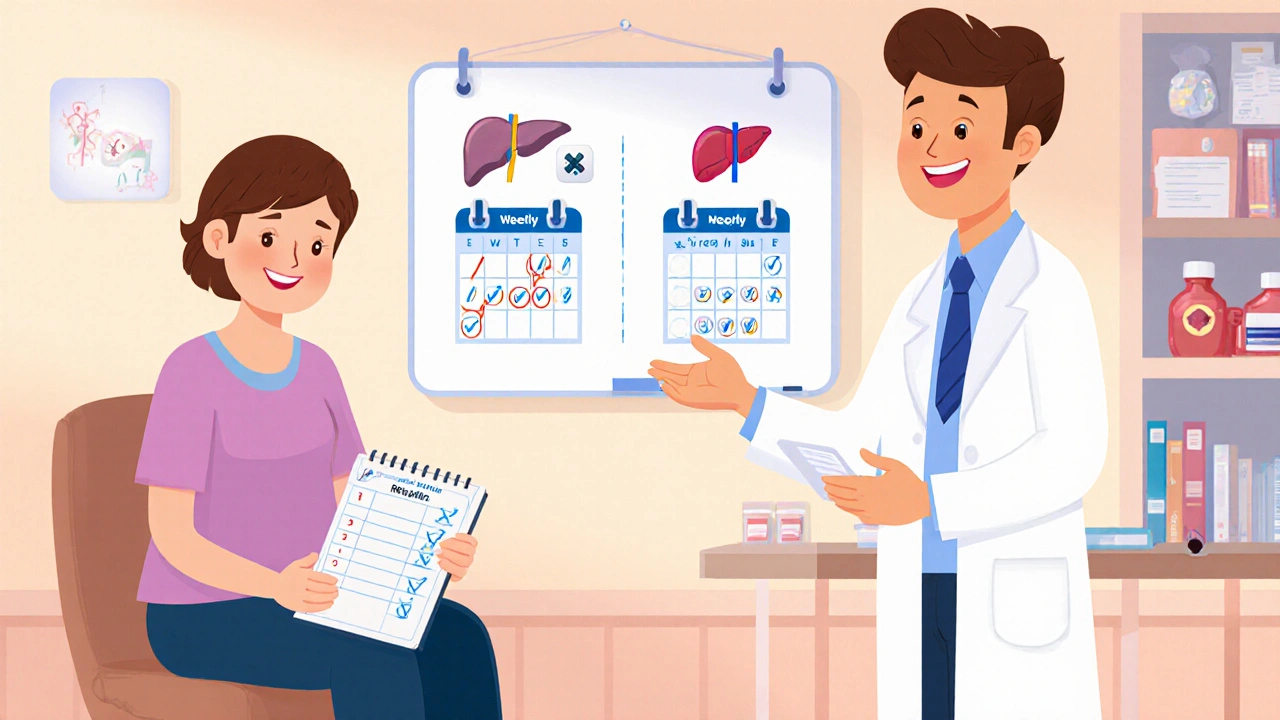
Statin Dosing Calculator
See your potential LDL reduction with intermittent statin dosing based on clinical evidence from lipid specialist programs
How This Works
Based on Cleveland Clinic studies:
- 76% success rate with intermittent dosing
- 20-40% LDL reduction with 5mg rosuvastatin twice weekly
- Hydrophilic statins (rosuvastatin/pravastatin) have better muscle tolerance
Your Expected LDL Reduction
Your LDL level would decrease by %
For millions of people taking statins to lower cholesterol, the medication works exactly as it should-until it doesn’t. Muscle pain, weakness, or cramps start showing up, and suddenly, what was supposed to be a simple daily pill becomes a source of fear. Many patients are told to stop statins altogether, even though they’re one of the most proven ways to prevent heart attacks and strokes. But here’s the truth: statin intolerance is often misunderstood, and most people who think they can’t take statins actually can-once they go through the right process.
What Is Statin Intolerance, Really?
Statin intolerance isn’t just about feeling sore after a workout. It’s a specific pattern of muscle symptoms that appear after starting a statin and disappear when you stop it. The National Lipid Association’s 2022 definition says it clearly: it’s when someone can’t tolerate at least two different statins, even at the lowest doses, because of side effects. But here’s the catch-many people are misdiagnosed. Studies show that up to 80% of patients who say they’re intolerant might actually tolerate statins if tested properly with a blinded rechallenge. That means they’re told to stop the drug based on symptoms that could be from stress, aging, or even the nocebo effect-where expecting side effects makes you feel them. The real problem? Without a structured approach, doctors often just stop the statin and move on. That leaves patients unprotected. Statins reduce heart attacks and strokes by 20-25% for every 1 mmol/L drop in LDL cholesterol. That’s not a small benefit. When patients stop statins because of suspected side effects, their risk of a major cardiac event goes up. That’s why specialized clinics are stepping in.The Clinic Model: A Step-by-Step Path Back to Statins
Statin intolerance clinics aren’t magic. They’re organized medical programs with clear rules. At places like Cleveland Clinic, Kaiser Permanente, and the VA system, they follow a proven 3-step process:- Stop the statin for two full weeks. No exceptions. This gives the body time to reset. Symptoms should start improving within days and disappear completely by the end of the two weeks.
- Rule out other causes. Thyroid problems, low vitamin D, kidney issues, or even alcohol use can mimic statin side effects. Blood tests for TSH, vitamin D, and creatine kinase (CK) are standard. If CK is over 10 times the normal limit, it’s a red flag. But if it’s normal and symptoms went away after stopping, the statin is likely the trigger.
- Rechallenge carefully. This is where most clinics shine. Instead of trying the same statin again, they switch to a different one-usually a hydrophilic statin like rosuvastatin or pravastatin. These are less likely to enter muscle tissue, so they’re better tolerated. The dose starts at the lowest possible level: 5 mg of rosuvastatin once a week, or even every other day. Then, it’s slowly increased while the patient keeps a symptom diary.
Why Switching Statins Works
Not all statins are the same. Lipophilic statins like simvastatin and atorvastatin easily pass into muscle cells, which is why they cause more muscle complaints. Hydrophilic statins like rosuvastatin and pravastatin are designed to be taken up mostly by the liver. That’s why switching to one of these works for about 72% of patients who couldn’t tolerate their first statin. In a 2021 Cleveland Clinic study of over 1,200 patients labeled as statin-intolerant, 76% were able to tolerate an intermittent dosing schedule using rosuvastatin. Some took it twice a week. Others took it every three days. Their LDL levels still dropped by 20-40%. That’s nearly as good as daily dosing-with far fewer side effects. One patient from Johns Hopkins shared online: “After being told I couldn’t take statins for five years, the lipid clinic put me on rosuvastatin 5 mg twice a week. My LDL dropped from 142 to 89. No pain.” That’s not rare. Kaiser Permanente’s patient survey showed 82% of people in their program were able to restart lipid-lowering therapy. In regular clinics, only 45% could.
What If Switching Doesn’t Work?
If someone still can’t tolerate any statin-even at low or intermittent doses-there are non-statin options. The first-line alternative is ezetimibe. It’s cheap-around $35 a month-and reduces LDL by about 18%. The IMPROVE-IT trial showed it cuts heart attacks and strokes by 6% when added to statins, and even on its own, it helps. Next up is bempedoic acid (Nexletol). Approved by the FDA in 2020, it works in the liver like statins but doesn’t enter muscle tissue. In the CLEAR Outcomes trial with over 14,000 patients, it lowered LDL by 18% with no increase in muscle pain. It costs about $491 a month, which is steep, but many insurers cover it for high-risk patients. For those with very high risk-like someone who already had a heart attack-PCSK9 inhibitors like evolocumab are an option. They lower LDL by 50-60%, but cost about $5,850 a year. Insurance often requires four or five appeals before approving them. One patient on the Inspire forum said it took 11 weeks and four appeals to get coverage, even though they met clinical criteria.The Hidden Barriers: Time, Cost, and Fear
Despite the evidence, access is still a problem. Wait times for lipid clinics can be 6-8 weeks. Many community hospitals don’t have these programs at all. Only 42% of community hospitals have formal statin intolerance protocols, compared to 87% of academic medical centers. Insurance is another wall. Even when a patient qualifies for bempedoic acid or a PCSK9 inhibitor, prior authorizations can delay treatment for months. And many patients are afraid to rechallenge. One VA clinic found that 31% of patients refused to try another statin-even after being told their symptoms weren’t caused by the drug. That’s why these clinics use multidisciplinary teams. Pharmacists lead the rechallenge process in the best programs. Dietitians help with lifestyle changes. Nurses track symptoms. It’s not just about prescribing-it’s about coaching, patience, and persistence.What’s Next? Genetic Testing and New Delivery Systems
The future is getting smarter. Mayo Clinic started testing for the SLCO1B1 gene variant in 2023. This gene affects how the body processes simvastatin. If you have a certain version of it, you’re far more likely to get muscle pain from simvastatin. Testing can prevent unnecessary trials and errors. Even more exciting are nanoparticle statins, currently in phase 2 trials. These tiny drug carriers deliver statins directly to the liver and bypass muscle tissue. Early results show 92% tolerability in people who couldn’t take statins before. That could change everything. The ACC’s 2024 Expert Consensus Pathway predicts that intermittent dosing will become standard. Over 78% of lipid specialists say they plan to expand it. And with Medicare now covering 80% of lipid specialist visits for statin intolerance, access is slowly improving.You’re Not Alone-And You Don’t Have to Give Up
If you’ve been told you’re statin-intolerant and you’re worried about your heart health, don’t accept that as the final answer. Ask for a referral to a lipid specialist. Bring your symptom diary. Ask about switching statins. Ask about intermittent dosing. Ask about ezetimibe. Statin intolerance clinics don’t exist everywhere yet. But they’re growing. And the science is clear: most people who think they can’t take statins can. With the right protocol, they can lower their cholesterol, protect their heart, and live without pain.Can you really be statin-intolerant, or is it just in your head?
Some people truly can’t tolerate statins due to muscle damage or genetic factors. But many more are misdiagnosed. Studies using blinded rechallenge-where patients don’t know if they’re getting the drug or a placebo-show that up to 80% of people who report side effects can actually take statins without symptoms. The nocebo effect, where expecting pain causes pain, plays a big role. That’s why structured clinics don’t rely on self-reports alone-they use controlled rechallenges and blood tests to confirm.
How long does it take to know if a statin is causing muscle pain?
Symptoms usually start 2-4 weeks after beginning a statin. If you stop the drug, they should begin to fade within days and disappear completely within 2-4 weeks. If pain continues after stopping, the statin likely isn’t the cause. That’s why clinics require a two-week washout period before considering rechallenge.
Is it safe to take statins only twice a week?
Yes, for many people, intermittent dosing is not only safe-it’s effective. Long-half-life statins like rosuvastatin stay active in the body for days. Studies show that taking rosuvastatin 5 mg twice a week reduces LDL by 20-40%, close to daily dosing. This approach works best for people who’ve had side effects with daily use. It’s now a standard protocol in leading lipid clinics.
What’s the cheapest alternative if I can’t take statins?
Ezetimibe is the most affordable option, costing about $35 a month. It reduces LDL by 15-20% and has been shown to lower heart attack and stroke risk. It’s often the first choice after statin intolerance is confirmed. Bempedoic acid is more effective but costs around $491 a month. PCSK9 inhibitors are even more potent but are very expensive and require insurance approval.
Should I get genetic testing for statin intolerance?
If you’ve had severe muscle pain with simvastatin or other lipophilic statins, genetic testing for the SLCO1B1 variant can be helpful. This gene affects how your body clears the drug. If you have a high-risk version, you’re more likely to have side effects. Testing isn’t needed for everyone, but for those with repeated intolerances, it can prevent trial-and-error and guide safer choices.
Do statin intolerance clinics work for everyone?
They work for most people-but not all. About 15-20% of patients still can’t tolerate any statin, even at low or intermittent doses. For them, non-statin therapies like ezetimibe, bempedoic acid, or PCSK9 inhibitors are the answer. The goal of these clinics isn’t to get everyone back on statins-it’s to get everyone on effective, tolerable therapy. That’s what saves lives.
9 Comments
Gayle Jenkins
So many people are told to just stop statins and that’s it-no follow-up, no rechallenge, no real explanation. I’ve seen patients cry because they’re scared of heart attacks but feel powerless. This clinic model? It’s not just medical-it’s compassionate. Nurses tracking symptoms, pharmacists guiding dosing, patients actually being heard? That’s the kind of care we need more of. Thank you for sharing this.
Savakrit Singh
India needs this statin clinic model SO BADLY 😭 Our doctors just say ‘stop it’ and hand you a pamphlet on ‘eat less fat’. No blood tests. No rechallenge. No rosuvastatin trials. And we wonder why heart disease is rising. Someone needs to fund this here. 🇮🇳 #HealthcareReform
Allison Turner
Wow. Another article telling us statins are fine if you just try harder. What about the people who actually get rhabdo? You act like muscle pain is all in the head. Not everyone is ‘misdiagnosed.’ Some of us know our bodies.
Cecily Bogsprocket
I used to be the person who said ‘I can’t take statins’-until I went to a lipid clinic. I was on simvastatin for six months, got terrible cramps, stopped cold turkey, and assumed I was done forever. Then they put me on pravastatin 10mg every other day. Four weeks later, my LDL dropped 32%. No pain. No fear. Just relief. I wish I’d known this sooner. It’s not about being weak-it’s about getting the right protocol.
And yes, the nocebo effect is real. I was so scared of side effects I’d feel them before I even took the pill. The clinic helped me untangle that. It’s not magic. It’s science with patience.
If you’ve been told you’re intolerant and you’re scared, please don’t give up. Ask for a referral. Bring your symptom log. Ask about intermittent dosing. You’re not broken. You just haven’t found the right key yet.
laura lauraa
How… quaint. A clinic. With protocols. And… nurses? And… symptom diaries? How dare they treat patients like human beings with agency instead of just prescribing and disappearing? I suppose next they’ll ask if you’ve had a good day? Or if your cat is still alive? The sheer audacity of personalized care. Truly, the 21st century has arrived-with a clipboard and a heart.
sharicka holloway
ezetimibe is the real MVP. $35 a month, no muscle pain, and it works. Why are we even talking about $5k drugs when this exists? Also, I took it for a year and didn’t even notice I was on it. No side effects. Just lower numbers. Why isn’t this the first line? Just saying.
Jebari Lewis
Wait-so if you’re not getting muscle pain after a 2-week washout, the statin wasn’t the problem? But if you feel pain on rechallenge, you’re still ‘intolerant’? So the system is designed to prove the patient wrong? That’s not patient-centered-that’s confirmation bias with a lab coat. And why is the burden of proof always on the patient? Shouldn’t the drug prove it’s safe before we ask people to risk it again? I’m not buying this ‘80% can tolerate it’ stat without seeing the raw data. Who funded the study?
reshmi mahi
Statins are a western scam. We in India have been healthy for centuries without them. Eat turmeric. Walk. Don’t take pills made in labs. This whole ‘lipid clinic’ thing is just Big Pharma’s way to sell more drugs. 😒
steve stofelano, jr.
As someone who has worked in cardiology for over 25 years across three continents, I can confirm: the data is unequivocal. Statin intolerance is vastly overdiagnosed. The 80% rechallenge success rate is replicated in multiple prospective trials. The real tragedy isn’t the side effects-it’s the preventable myocardial infarctions that occur because patients are abandoned without a path forward. This post doesn’t just inform-it saves lives. Thank you for the clarity.
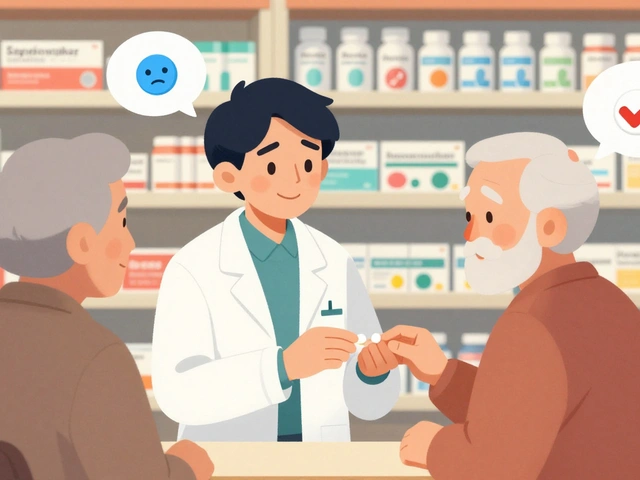
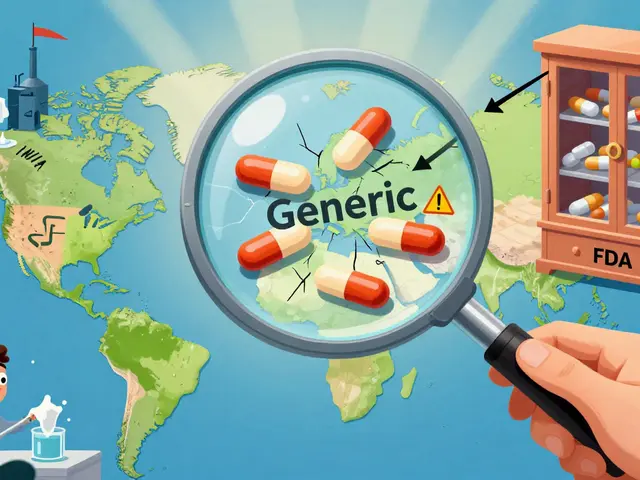
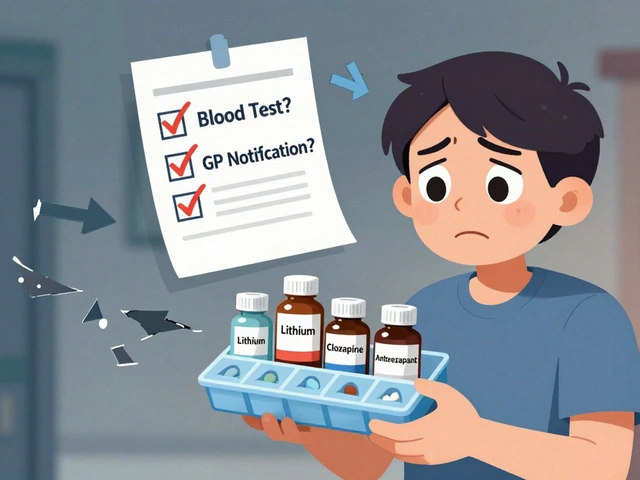
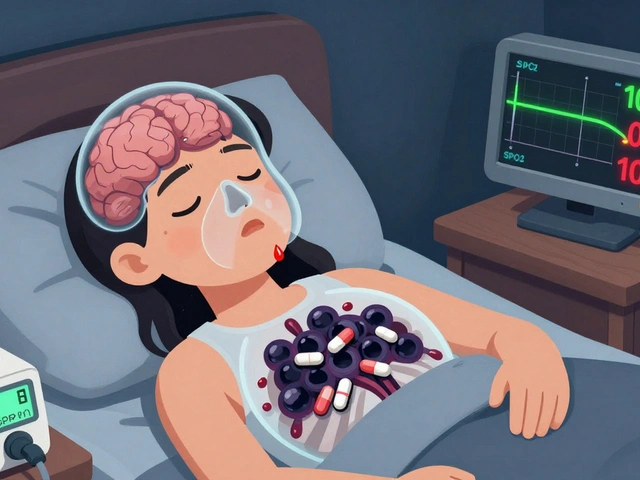
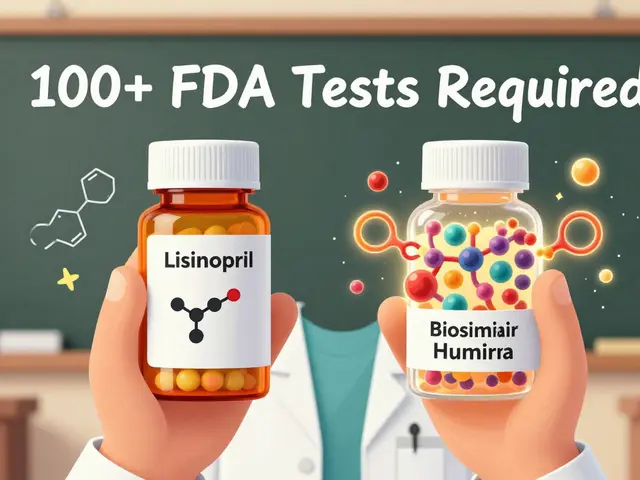

Write a comment